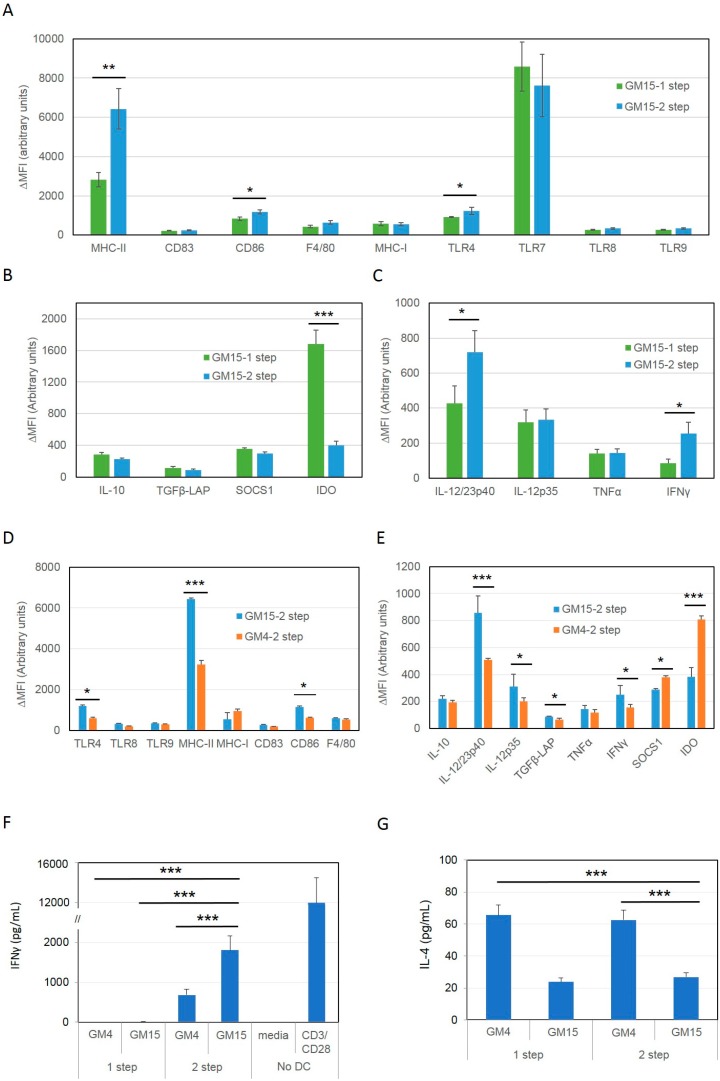Figure 3.
DCs matured with a two-step protocol in the presence of anti-CD40 and anti-IL10R antibodies for 24 h, followed by LPS/IFNγ/CpG stimuli present a more mature phenotype and stimulate a more Th1-skewed T cell response compared to canonical LPS/IFNγ maturation. (A–E) Immature antigen-pulsed DCs were obtained in the presence of either IL4 (GM4) or IL-15 (GM15) as reported in Figure 2. Cells were then pulsed with an ID8 tumor cell lysate treated with squaric acid and subsequently matured in the presence of either LPS/IFNγ for 24 h (GM15-1 step, GM4-1 step) or with a cocktail mix containing anti-CD40 and anti-IL-10R for 24 h, followed by a second mix containing LPS, IFNγ and CpG for the subsequent 24hr (GM4-2 step, GM15-2 step). Expression levels of indicated markers were then assessed by antibody staining followed by FACS analysis. The net mean fluorescence intensity (ΔMFI = Raw MFI-MFI of Isotype) for each marker is reported in the graph. (F,G) IFNγ and IL-4 production measured by ELISA after 24 h co-culturing of splenic T-lymphocytes isolated from tumor bearing animals with the indicated DC formulations. Data are representative of at least 3 independent experiments. Significant differences were assessed with unpaired Student’s t test and indicated with asterisks: * p < 0.05; ** p < 0.01; *** p < 0.005. (CpG: CpG oligonucleotides; DC: dendritic cells; GM-CSF: granulocyte-macrophage colony-stimulating factor; IL-4: interleukin-4; IL-10R: interleukin-10 receptor; IL-15: interleukin-15; IFN-γ: interferon-γ; LPS: lipopolysaccharide).

